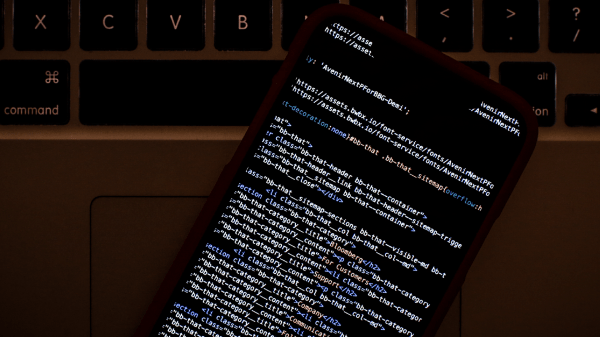California is ditching bail, and now courts must choose a risk assessment tool

In support of the quintessentially American notion that a person is innocent until proven guilty, California Gov. Jerry Brown signed a bill last week eliminating the cash bail system in the state and replacing it with something more scientific.
When the law goes into effect on October 1, 2019, instead of setting bail amounts that defendants must either provide as collateral or else be detained, each court will instead select and use a pretrial “risk assessment tool.” The tool is essentially an algorithm — a set of weighted factors and rules that produce risk scores that help courts decide who should be jailed and who can safely go free until their court date arrives.
But courts will be left to decide which tools they use, and not all tools are equal. Some are opaque and proprietary, and have been criticized as racially biased — and thus no better a tool to combat class inequity than cash bail itself. California’s new law requires standards be put in place to ensure the tools courts use are fair, but much of that work is yet to be done.
Brown said he signed the legislation, SB 10 , because it will ensure the “rich and poor alike are treated fairly.” A 2015 report from Vera Institute of Justice, a New York think tank, suggests that the cash bail system tends inordinately to detain low-income defendants, while wealthier defendants are often allowed to go free after posting bail, regardless of the public safety risk they may pose.
The new law has the California bail bond industry in a state of despair , and some previous supporters of the legislation now protest it after a change was made they say will allow courts to automatically detain defendants, as opposed to setting them free by default. But overall, the law that’s being prepared to transform pretrial decisions in a state known for setting national trends may well kick-start a sea change in the criminal justice system that civil rights advocates have been demanding for years.
‘No harm to public safety’
The Eighth Amendment prohibits “excessive” bail, but public debate has done little to settle exactly what that means. Elimination of bail in favor of data-driven system isn’t a new idea; the first was developed by the Vera Institute of Justice in 1961 under the name of the Manhattan Bail Project. Widespread adoption of the idea would have a significant impact on U.S. jails – about 450,000 people are now being held nationwide without having been convicted of a crime, according to the American Civil Liberties Union.
California is the first state to legally abolish the cash bail system, but it’s not the first to cut back on bail. New Jersey has left bail available as an option to its courts, but they almost completely stopped using it last year. And according to a February report by the New Jersey Judiciary that looks at the reform during calendar year 2017, the new model is thriving in at least one respect — the state’s pretrial jail population is down 20 percent.
Risk assessment tools are also used in jurisdictions scattered around the country both to determine pretrial detainment decisions and to support other court functions, like sentencing. A 2017 report by the Pretrial Justice Institute determined that Yakima County, Washington’s pretrial system, which replaced bail with such a tool in February 2016, is “fairer and is as safe and effective.”
Based on what researchers saw in Yakima, they write that any jurisdiction might “reduce pretrial detention and improve racial/ethnic equity … with no harm to public safety or court appearance.”
But for California courts, risk assessment experts say it won’t be as easy as simply picking a tool and kissing bail goodbye. Some tools have proven more fair than others, and there are often local factors that would require courts to test and validate their tools locally before most experts would deem them fair.
A popular risk assessment and crime prediction tool developed by a company called Equivant called COMPAS has been accused of being both racially biased and unsophisticated to the point of being no better than making random choices. But neither claim can be investigated further, because the company has refused to reveal the tool’s proprietary inner workings.
There are other tools that are generally accepted to be fair, such as a national tool developed by the Laura and John Arnold Foundation called the Public Safety Assessment, sometimes called “the Arnold tool,” or another called the Virginia Pretrial Risk Assessment Instrument, or VPRAI. Each has been adopted by pretrial offices in jurisdictions around the country.
California’s solution to this problem is, through its new law, to create a seven-member panel of judicial officers and subject matter experts, one of whom is required to specialize in bias, to create and enforce standards that courts must follow when selecting their tools. An official from the Judicial Council of California, which is convening the group, told StateScoop none of the panel members have yet been named but that all of the work mandated by the new law is now underway.
‘A very good precedent’
The law requires that the tools “be demonstrated by scientific research to be accurate and reliable in assessing the risk of a person failing to appear in court” and to “minimize bias.” Knowing what that will look like for jurisdictions around the state doesn’t require much imagination — Santa Clara County, which contains the city of San Jose and the surrounding area, has been using a locally verified version of VPRAI since late 2012.
Aaron Johnson, director of the Office of Pretrial Services for Santa Clara County, told StateScoop the tool isn’t just for bail replacement (the county hasn’t abandoned bail yet), but rather it represents a shift toward creating better outcomes in criminal justice.
“The whole process for pretrial assessment is to give the courts as much information as possible and to give them the best possible recommendation for success for the client, [and justice] for any victims in the case,” Johnson said. “We’re really looking at a holistic view and trying to do what’s best for the entire community. … I think we’ve set a very good precedent.”
Data released by the county last month shows appearance rates exceeding 90 percent almost every month for the past year, and safety rates — the percentage of supervised defendants who are not arrested for a new offense during the pretrial stage — at close to 100 percent every month. Johnson said he was not able to compare these results with the period before the county began using the tool, but that, nonetheless, the outcomes seen today are “really good.”
Santa Clara’s tool contains 16 factors, such as age of arrest, prior history, marriage status, living situation, health issues, whether the defendant has pending cases. The tool was also locally validated, which doesn’t mean there is a unique factor in Santa Clara that can’t be found anywhere else, but rather it’s the equivalent of a custom-tailored suit as opposed to wearing something straight off the rack. With help from the Pretrial Justice Institute, which provided technical support, Santa Clara was able to find the collection and weighting of factors that mattered most for its populace.
Santa Clara’s tool takes into account specific charges in some cases, such as in cases of domestic violence, which are different enough from other crimes that defendants in those cases may require specific direction. For this piece of the tool, the county uses something called the Ontario Domestic Assault Risk Assessment . This is important, Johnson said, because it helps his office provide customized support to defendants as he strives for the best possible outcome for everyone involved.
Lastly, the county’s tool contains an optional interview. Some tools, such as the Arnold tool, don’t use an interview, but Johnson said if defendants don’t want to cooperate, the county can still complete the assessment, but having the additional qualitative data helps provide a more comprehensive report to the court.
Johnson said his office has already begun the process of working with his superior court to get the county’s tool approved by the state and that he’s confident it will be accepted. Other jurisdictions around California that haven’t been doing this already for five years will have some extra work to do.
“We’re trying to help people,” Johnson said. “We’re trying to keep the public safe and we’re trying to make sure people show up for court. There is an opportunity for it to be a win-win for all the parties involved.”





